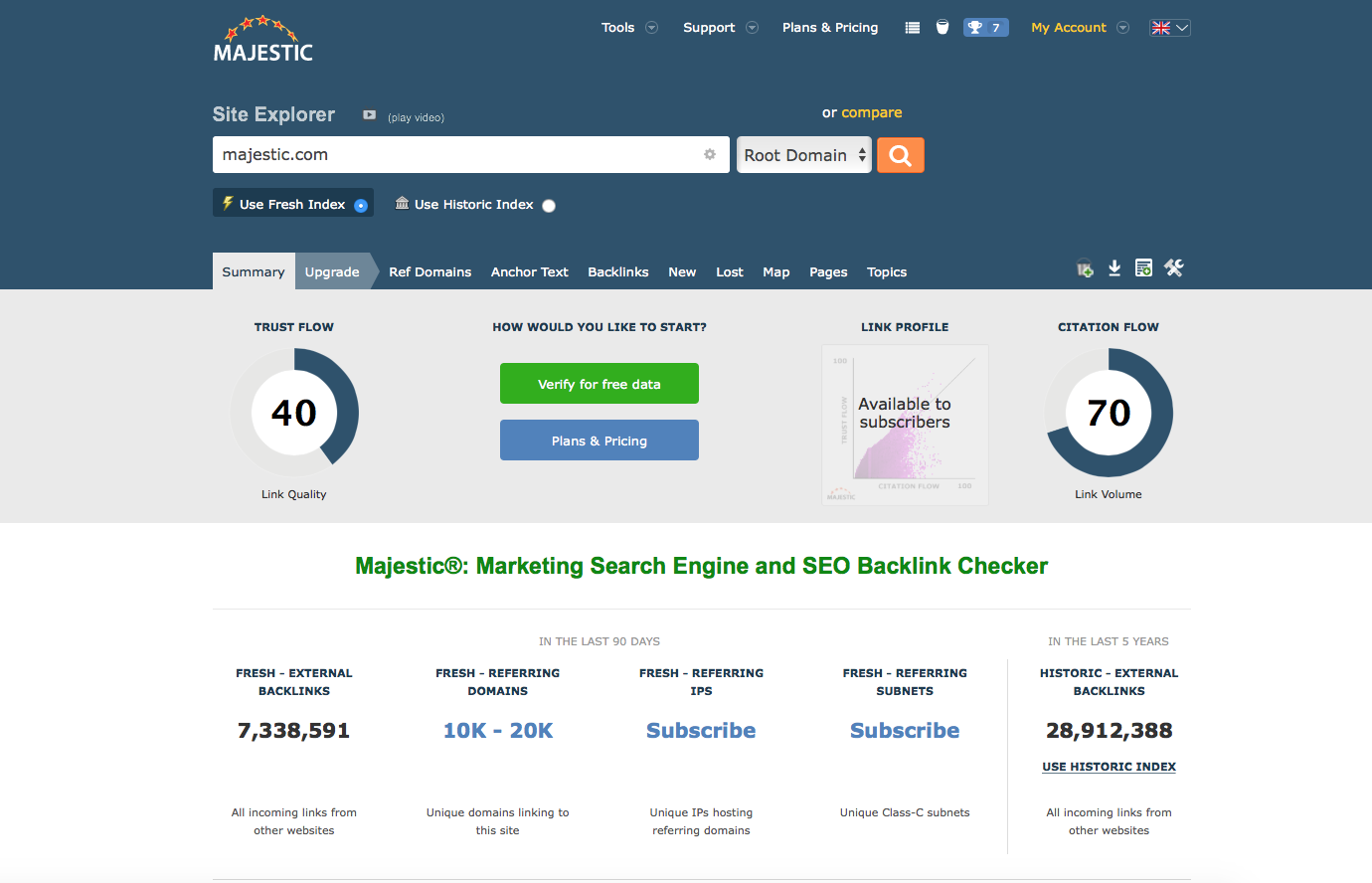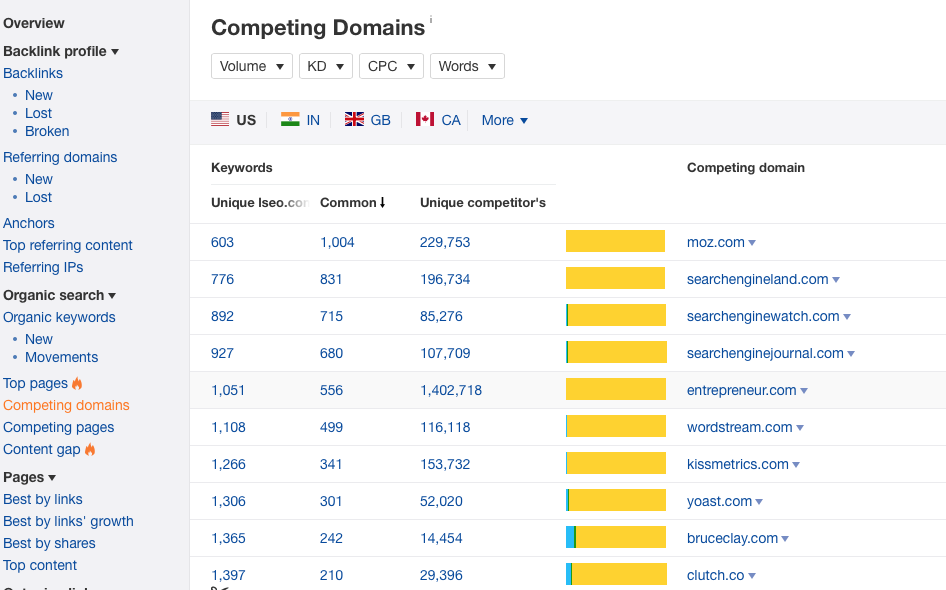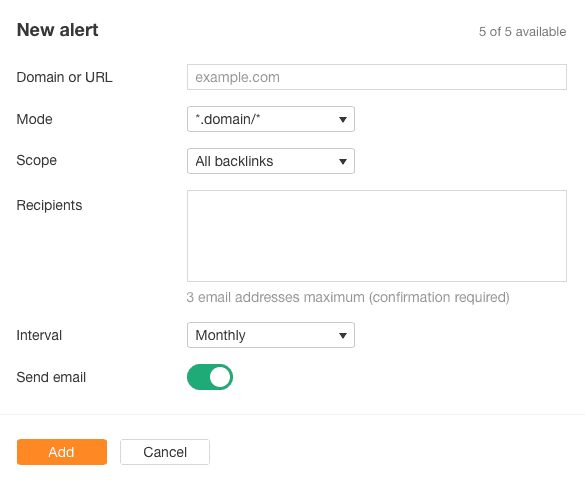Keep your friends close and your enemies closer. The saying runs so true for digital marketing that one of the first steps we complete for our clients is a competitive link audit.
Competitive analyses allow you to directly crawl your competitors’ sites to discover valuable backlink opportunities that they may be using to outrank you organically.
Backlinks remain the gold standard of SEO currency and acquiring backlinks is like becoming a miner in California during the 19th century. Websites must acquire a few links of their own to build up their organic keyword rank before they strike gold.
I’ve witnessed the evolution of link building over the past decade and it’s gotten far more difficult. Whoever said link building is a lost art?
Here’s how to conduct a competitive backlink analysis and how to identify areas where your website can earn some easy wins using your competitor’s backlinks.
Getting Started
There are a number of competitive analysis tools to choose from. My favorites include Ahrefs, Majestic Site Explorer, SEMrush, and Moz’s Open Site Explorer. (You should use multiple backlink analysis tools for a holistic analysis.)
Consider what you or your client’s objectives are when initiating a competitive audit. Are they looking to boost their domain authority, promote content, or rank for specific keywords? Often enough, all of the above.

Evaluating your trust and citation flow will identify the quality and quantity of your backlink portfolio. Both metrics use a logarithmic scale of 1-100, the latter being the highest. ‘Trust Flow’ evaluates the quality of your inbound links, while ‘Citation Flow’ evaluates the popularity of your website – typically determined by the quantity.
The average number of referring domains and your competitors’ trust flow will provide a baseline for your website to achieve through its link building campaign to scale its organic rank.
Use a tool, like Majestic, to look at your highest ranking keyword phrases, which pages are receiving the most traffic, and what your most popular pages by links are. These strategies will identify what’s successful for your website this far.
Building Domain Authority & Trust
Now let’s begin with our competitive analysis. In order to identify your competition, you could conduct a Google search of a service offered by your business.
Scrape the top 10 resources and input them into a spreadsheet – these will represent your top performing competitors. Hopefully, you can name your top 5 competing brands off of the top of your head.
You could also conduct a Google search for: related:“your domain name here”. A list of related businesses will appear.
Ahrefs offers the easiest method under their ‘Competing Domains’ tab and SEMrush has a similar tool. You can also look at competing webpages, as well the “content gap” between them and the competition.

Be sure to manually check out each competing webpage to see if they specialize in your niche and operate on your scale.
I like to export my top 10 competing domains to a spreadsheet and sort them by their domain authority, total number of backlinks, and referring domain count.
At this point, you can set up weekly competitor backlink alerts that will report on all new backlinks acquired from a competing URL. Click on ‘Ahrefs Alert’ and type in the domain you wish to receive reports about.
It’s important to track websites on your scale. A site like Moz.com might become cumbersome to track as they gather so many backlinks daily.

Now you can look through all of the backlinks and referring domains your competitors possess. Moz’s Open Site Explorer, Ahrefs Site Explorer, and Majestic offer a complete list of all referring URLs and options to export them into a spreadsheet.
Sort through each domain’s URL profile to discover:
- Link opportunities from branded text URLs.
- Domains that link multiple times to a single domain.
- Shared links among your competitors using Ahrefs ‘Link Intersect’ tool.
- Dead links.
Links with branded anchor text could open up various backlink opportunities including:
- Resource pages
- Directories
- Citations
- Guest posts
- Testimonials
- Case Studies
Links pointing to the homepage will probably align with the link building strategies above as well. Homepage links serve as a general measure of that business’s reputation and a result of their total success acquiring inbound links.
You can export a single competitor’s report into a spreadsheet and set up filters, such as domain authority, anchor text, etc. Purchasing a SERP scraper tool will speed up the process and make filtering easier.
Place all of the filtered backlinks into one column and sort by your desired metric. This will provide a robust resource for inbound link leads.
You can filter out duplicate domains and URLs to shorten your list. But you could also highlight these domains to discover sources that are linking consistently to the same website. Most likely that website will be linking toward material relevant to content found on your site. Consider reaching out to their webmaster as they may be responsive to linking to your site.
Export all of your competitors backlink profiles and run them through the same filters. Understand that a majority of these links can be spam, paid links, or links from websites with low trust. Only a quarter to a third of these links will actually present good leads.
While filtering out duplicate links in your spreadsheet you will discover shared links among your competitors. Analyze the anchor text of these links to see whether they’re relevant to each other. This will also tell you the type of content this website is looking for as a citation.
These will provide great leads for content outreach as these sites will be receptive to linking toward sites in your industry. It will also make your website top-of-mind whenever another article is published relevant to your site. Remember to search for relevant and authoritative links.
Shared links also come from industry directories and resource pages, such as Clutch.co. Tools, such as SEMrush offer ways to filter links by top-level domains, which is effective for finding .edu or .gov links.
This process ultimately involves a lot of manual research to discover great leads. You could also type in your competitor URLs into Ahrefs, using their ‘Batch Analysis’ tool to measure multiple different metrics for a comprehensive competitor audit. Discover pages with the highest links and social shares for an idea of strategies to build out your own link portfolio.
Content Audit & Promotion
Using Ahrefs ‘URL Profiler’ application you can pull all of your client’s URLs into a single document and begin an extensive content audit. You can sort your client’s content based on its total shares and backlink profile to give you an idea of what you’re doing right.
This is important because it tells you what type of content your audience engages with most, which aids in keyword research and scaling your brand.
While conducting competitive backlink audits, you can also measure your competitor’s top performing pages based on their backlink profile and by social engagement.
Type in competitor URLs into Buzzsumo or on Ahrefs to see the total number of shares they have acquired. This will tell you what they’re doing right in their content marketing campaign. These webpages will most likely outrank yours for organic keywords as well.
This method doesn’t even have to be applied to direct competitors. You could type in a keyword search and place the top 10 results into Ahrefs ‘Batch Analysis’ to discover backlink sources for these high ranking publications.
For example, if you have a niche product, such as SleepPhones, which are comfortable headphones designed to be worn while relaxing or sleeping, you may want to look into sites that discuss other sleep-related paraphernalia. Chamomile tea distributors or meditation sites may get links to the types of sites that would reference this product.
Produce a backlink profile of their highest trusted and linked to pages in Ahrefs and place a filter of ‘one link per domain’ to filter out any spam links. This will provide their highest authoritative backlinks.
You can do outreach to these publications and submit content for guest postings. Manually review these websites to see if any of them are forum pages or provide further reading examples for a topic related to your niche. Conduct the same outreach and submit a piece of content you believe will benefit their readership.
Consider searching for more guest posting opportunities by researching industry leading authors over Google and other guest posts they’ve published recently. A simple search for “author name” inurl:author will produce a complete list of posts that person is credited as an author for.
Additional Link Building Resources
Finally, Ahrefs offers a great tool for discovering competitor broken links. Begin scraping all of your competitors broken links and submit or create content that could fulfill these links. I’d recommend doing this before your competitors do.
All links from comments sections and community forums only require participating in them. It’s good to conduct a Google search for any directories your competitors are involved in for some easy resource links you were unaware of.
Mainly, the point of competitive link analysis is to find highly authoritative links your competition is ranking from and to develop relationships with domains that are receptive to links.
Final Thoughts
Completing a competitive link audit will present a variety of link building resources that can be acquired naturally. The next step is developing the content to fulfill a vast reservoir of link magnets.
Once you begin to see results from this link building campaign you can begin investing in other resources at your agency or business.
SEO is the gift that keeps on giving, and once you acquire trust with search engines through qualitative backlink acquisitions, your content will be positioned to rank higher and acquire backlinks naturally moving forward.
- Related reading: SEJ’s Illustrated Guide to Link Building
Image Credits
In-post images: Screenshots by Kristopher Jones. Taken September 2017.





